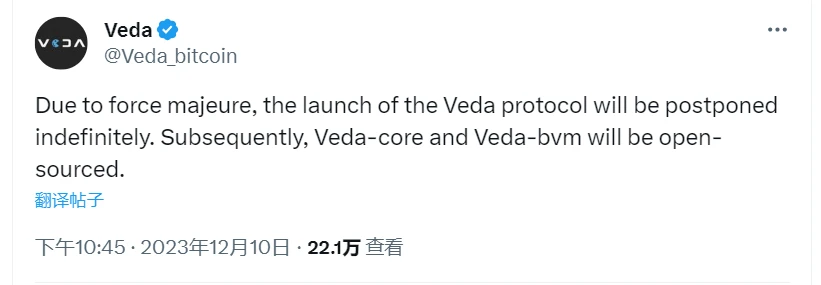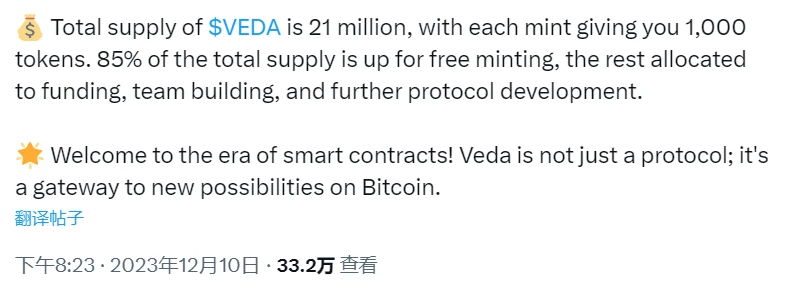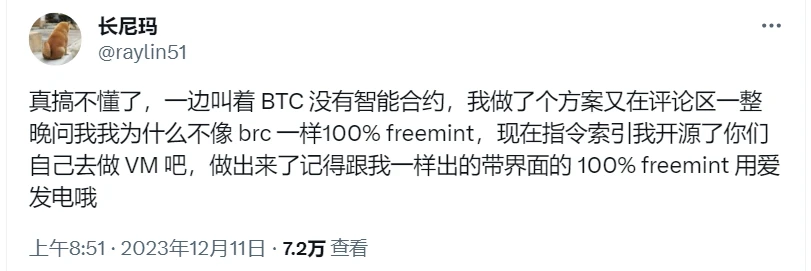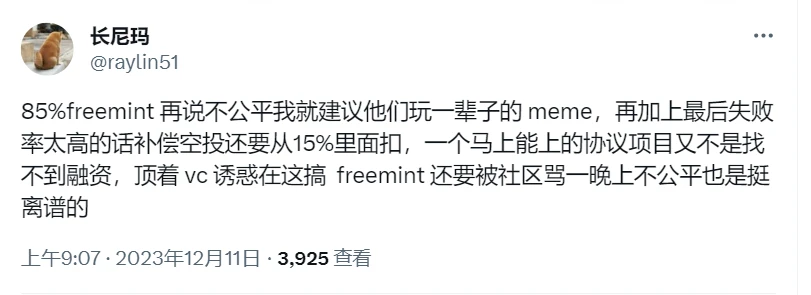Original - Odaily
Author-husband how

Today, Bitcoin Ordinals EVM expansion protocol Veda announced an indefinite postponement on the X platform, and said it would open source Veda-core and Veda-bvm.
It is worth noting that 2 hours before this news was released, Veda also announced that the protocol was about to be launched and disclosed its token economics and token standard VRC-20.

Why did a project that was about to be launched take a turn for the worse in a short period of time and end in an unseemly manner? Odaily explored the comparison.
Basic overview of Veda
Veda is an experimental EVM extension protocol based on Bitcoin Ordinals. It introduces off-chain indexes to verify Veda data on Ordinals and provide status queries for contracts. Veda aims to solve the lack of Layer 1 smart contracts in Bitcoin without changing the Bitcoin Core consensus. According to the information disclosed by the project party, the creation of VEDA token standards will be supported in the early stage and will be compatible with the ERC-20 standard.
According to official media information, the Project
In addition, according to its disclosed token economics, the total supply of VEDA tokens is 21 million, each inscription provides 1,000 tokens, 85% of the total supply is used for Freemint, and the remaining 15% is used for funds. , team building and further protocol development.

The founder’s identity was “human fleshed out” by the community
The conflict between the community and the founder has actually existed for a long time. According to founder Chang Nimas tweet, last night the community questioned the founders earliest token distribution and believed it was unfair.
The core contention is this. Most community members have experienced the BRC-20 minting method and believe that projects in the Bitcoin ecosystem should be 100% Freemint, and are also worried that the project founders will use the remaining tokens to manipulate the market.
Subsequently, the founder compromised, listened to community suggestions, changed the initial distribution plan, and increased the initial Freemint total minting ratio to 85%, but still failed to satisfy the community. The founder then posted a message on social media, blaming community members, further intensifying the conflict between the two parties.


Today, some members of the community began to “human flesh” the founder’s true information and disclose it to the public. The founder was worried about the impact of the subsequent development of the project on himself, so he announced that the project would be postponed indefinitely. At the same time, he also disclosed the project code and handed it over to the community for operation.

At this point, this farce came to an end briefly, and no one became the ultimate winner, leaving only a premature encryption experiment with no future in sight for the industry.










